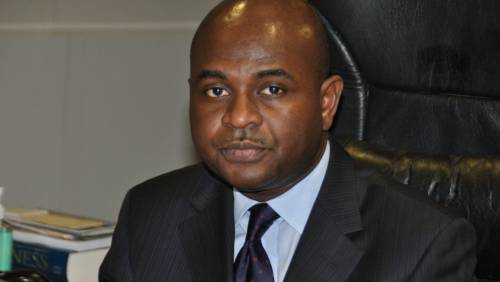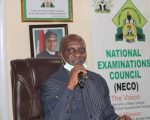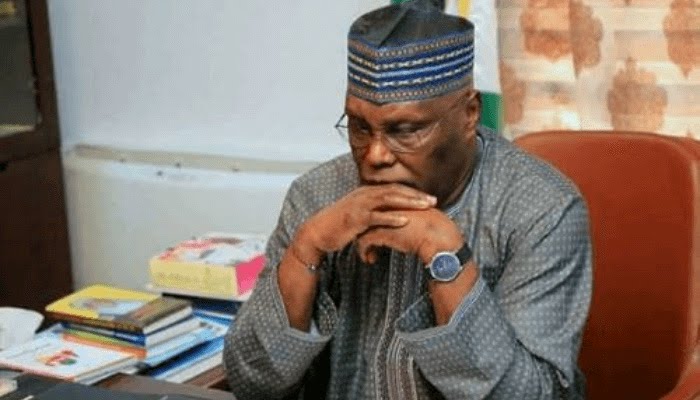Mr Chairman, ladies and gentlemen, without trying to be irreverent and with the most profound respect and regards that I can muster for this audience, I crave your indulgence, and indeed your protection to desist from accepted norms of protocols that this all-important event would require. I have deliberately asked for this protection fully aware that this audience is a highly informed one that is familiar with the scholarly incumbencies of a book review. I fully intend to depart from that norm while doing justice to the task at hand. The reason for this is simple.
The Author has made known his intention to lead this great country by participating as a candidate in the next elections. He has also declared that the Book, Build, Innovate and Grow or BIG for short will be his strategic document for engagement and lifting Nigeria out of her present state. It is therefore only fair that this book not only undergoes a review but a rigorous analytical critique of its content. This in itself is pertinent given that history, which is very much extolled in the book, had taught us that many Nigerian leaders had emerged when no one thought they stood a chance. Given the state of disillusionment, anger, dissatisfaction and frustration with the way her current overlords govern Nigeria, we may not be too surprised if the Author is sworn on May 29, 2019. Since this is a possibility, let it not be said that we were caught unawares by the policies he begins to implement. We have been served a BIG notice (pun intended).
Build, Innovate and Grow is a collection of the Author’s Visions for Nigeria spread over 25 Chapters of unputdownable reading. These Chapters are further broken into four parts each dealing with different aspects of the Nigerian project, its perceived and real ills and how the Author hopes to confront them. What first jumps at any discerning reader is the Author’s candour in situating the underlying mitigants to Nigeria’s rise to glory. Part one, the Author delves into issues of leadership and governance. The Author’s discourse was retained in 6 chapters of no holds barred appreciation of the Nigerian leadership and governance deficits. The Author begins by foregrounding the now accepted position that poverty of quality leadership is at the heart of Nigeria’s current woes and asserts that if Nigeria were to get out of the woods, then it must think BIG. To think BIG according to the Author entails that the leader has what the Author identifies as a worldview. This Worldview approach to leadership runs throughout the BIG paradigm that the Author recommends for Nigeria’s breakthrough.
The Author maintains that any cursory or even in-depth study of developed economies in the world would reveal a pattern of subsisting with a worldview that guided that development trajectory. So what is this Worldview? The Author describes it at the individual level as a “mental and philosophical compass that guides how we see and interpret the world and make our way through life”. This description is then exerted to encompass or aggregate a gamut of national and international aspirations within which a nation should anchor or prime its development objectives. The Author situates the leadership conundrum that has dogged Nigeria and its realities highlighted in the triple helix tug of the “loyalty versus competence, us versus them and power versus responsibility” battles as an epiphenomenon of the absence of a clearly defined worldview. The Author showed little patience for the cliche “international community” that many a Nigerian leader panders to and is of the view that every nation charted its course out of its relative obscurity and based on its enlightened self-interest. The BIG Visions in part one are:
a) The call for the ratification of a Worldview Charter by the Federation( including the federating units)
b) the enthronement of meritocracy and professionalism in governance
c) the adoption of strategic governance approach
d) the strengthening of institutions of government
e) a more holistic approach in fighting corruption.
While it is easy to reconcile and understand the Author’s inclination towards the enactment of a Worldview Charter as the basis for development, it throws up a first order problem. To be fair, many climes adopt nationalist purposes or goals in their dealings with other nations. However, the internal dynamics of these countries, given the sophistication of their democracies and polities, cannot be confined within the straight-jacket of an overarching ideology. What we perceive as the guiding principle of some well-formed polities are actually in fact, cultural nuances adopted over time and not some policy thrust enshrined in enactments. For instance, Weltanschauung, which is the German calque for worldview is not an instrument of law but a cultural mindset which Sociologists like James Underhill have further subdivided to reflect its ambiguity. The Author singles out the US amongst other examples, but the US example clearly shows that the overarching principle of a nation is not static and is framed within the biases of the president at that point. So, for Trump, it is MAGA(making America Great Again).
The Author proposes adopting “Nigeria: One Nation, One Destiny”. But, let us point out that sloganeering development is not new to us. We have had “back to the land”, “Operation Feed the Nation”,”Home Grown Democracy”,”Not in our Character”, Nigeria; Beautiful Nation, Beautiful People” to mention just a few. The Author seeks to depart from making this attempt more than a slogan by entrenching it in our laws. Herein lies the first -order problems. Given the Author’s support for a restructured Nigeria, will the phrase “should be ratified by all the states” not be a negation of that position? How does the Author hope to get an enduring buy-in when the view is only as good as the next elections?
With regards to elections, the Author, in chronicling the roles of ethnic-religious politics in the Nigeria’s leadership landscape, did not bring clarity on how his worldview approach will deal with the reality of identity politics given that most of the over 80 million registered voters in the next elections due to a chronic lack of education will be guided by the same tainted view he desecrates.
B) the Author extolled the virtue of meritocracy and professionalism in the bureaucracy but fell short of providing a clear path to entrenching these values. While an anecdotal reference was made to incentivization in chapter 6, theoretical and practical nuances tell us that pay for performance alone can not guarantee the desired outcome, especially where other forces including intrinsic motivations motivate civil servants.
The Author harped on the place of institutions in the development of a nation and all but argued that the institutional frameworks that undergird our development are weak. I concur. However, a failure to properly contextualise what amounts to institutions in the book presents another ambiguity. Douglass North has argued that formal rules rather than organizations are what makes institutions. It has been said that the problem with Nigeria is not about rulemaking but the implementation of those rules by actors. Perhaps, it is all about the will to follow rules that have made our institutions weak. A situation the Author promises to resolve through purposeful and strategic leadership.
Again, the Author’s recommendation that non-majoritarian institutions be free of government influence may seem to run contrary to his development panacea of a regulated or rather a cautious handshake between government and the markets. I also find curious the Author’s rejection of political appointees into government agencies as Chief executives but recommending them as members of Board of same agencies. In reality, quite frequently, even the best and most disciplined technocrats are soon corrupted by the political class because of the approval limits that are placed on them. They are usually coerced into forming alliances with the “devil” to succeed.
In the fight against corruption, the Author dismisses the principal-agent approach to corruption fighting. It is, however, refreshing to see that a more systemic slightly modified collective action approach was proposed. Perhaps, a method that adopts both approaches would be the real BIG proposal that can be explored. The Author subsists with the pervasive consensus that corruption is a problem caused entirely by political actors and some Nigerians, but the 2015 Thabo Mbeki High Level Committee reveals that of the illicit financial flows that leaves Nigeria, 95% is by Trans National Corporations while Politically Exposed Persons account for just 5%. Perhaps , another BIG anti corruption strategy will be to get these Corporations to refund what they have stolen.
Part two of BIG sees the Author going freestyle if you may permit my use of that street slang. Unlike the thematic focus of the previous part, part two unravels the activist mould that has never before been seen in the Author until his foray into the murky waters of politics. He took no prisoners here and addressed women, youths, politicians and that big elephant in the Nigerian body polity, restructuring. While he highlights many of the issues surrounding women’s lack of participation in politics and the apparent socio-economic disparity that exists between the sexes but mostly favouring the male gender, the Author only made a tangential detour on the cultural limitations that women are confronted with. The silence of BIG on the patriarchal subjugation of women is a grievous oversight of the years of battles that have been and is still being fought to bridge the gender disparity.
Another observation is the sweeping assumption that female children are being deprived of education when in some places especially in the South East geopolitical zone, the significant challenge right now is the rate of boy child school drop out. The Author’s direct appeal to the Nigerian Youth is compelling, but beyond encouraging this demographic to use its numbers wisely, no effort was made to provide a rousing battle cry that would propel a radical reaction. It would be interesting to see how the Author will inculcate the recently signed not too young to run law into his framing of messaging for this attractive demographic.
On restructuring, the Author fancied a decentralised Nigeria but was loudly silent on the political economy of the decentralised entity. It is instructive to note that political devolution of powers is only a small component of the whole idea of a restructured Nigeria and hiding behind the oft-quoted cliché of “the federating units developing at their own pace” is a call to anarchy in economic terms. The reality is that the reason many states are not developing economically is a function of the disparity that exists between the federating units which the Author highlights by stating that only 6 states in the current structure were viable. Again, BIG was quiet on how to harness the comparative advantages of the federating units without altering the balance of the federation to prevent what Jean Pierre Foucault called a race to the bottom.
Part Three sees the Author unpacking the breadth of his experience in economic matters, given his background, primarily as a Central Banker. The Author, relying on government released data showed quite convincingly why the current focus on neoclassical growth economics was shortsighted. Rather than growth or GDP economics, the Author made a strong case for the economics of development and transformation. This stance, of course, aligns with the more accurate and people-oriented economic measurement indicator of the Human Development Index developed by the UNDP. The Author is not under any illusions about the panacea he is recommending for the economic development of the country.
A very keen reader would not help but notice the Author’s caricature of mimetic isomorphism as an economic policy curve by Nigeria’s leaders when he wondered why there had been a lack of attempt to “ interrogate” these economic “fashion” stereotypes or what he mockingly called “wisdoms”. He ridicules the lack of intellectual grasp of the complexities of economic development for late developers such as Nigeria which is seen in the confusion of economic policies. A simple look at the government’s Economic Recovery and Growth Plan will reveal the cacophony of chaos that is our economic blueprint as we oscillate between a laissez faire to a statist economy. The Author’s strong bent towards the developmental state is foregrounded by his espousing the various strands of capitalism and historical analysis of how the Asian tigers or dragons, depending on your choice of animal, rejected the pure market fundamentalist approach with colossal success. At any rate, the purveyors of structural adjustment programmes for developing nations have never played by the dictates of the philosophy they project to the rest of the world. Having made a brilliant case for the developmental state akin to what transformed the Asian dragon nations, the Author, again curiously, panders to the neoliberal orthodoxy of “government cannot provide jobs” but create enabling environment jargon.
While it is correct to state that the job of providing jobs to the teeming populace is not the sole responsibility of government, the Chinese example has shown that State Enterprises, in a developmental state can thrive if corruption is reduced to the barest minimum. Since the Author’s cardinal economic objective is “jobs, jobs, jobs” as he puts it, then no strategy should be off the table. But the Author recovers, as it were, from this distraction to remain true to type when he called for “smart protectionism” and massive investments in education and innovation through research and development. Smart protectionism here is only smart to the extent of wanting to avoid the hammer of one of the watch guards of globalization, the WTO. But shouldn’t a government that wants to go BIG be bold enough to jump on the shoulders of US President, Donald Trump’s revulsion for the rules of the WTO to institute lasting economic restructuring? The Author attempts to court controversy when he questions the practice of placing the burden of the economic development of the country solely on the shoulders of career economists.
Relying on historical and more contemporary examples, the Author argues that the onus should be the responsibility of a mix of those he called economic thinkers and the more traditional economists given the formers more pragmatic, strategic and outside the box approach to problem solving. The debate over the wisdom of pure and applied economics in resolving global economic problems is still ongoing, what is settled however is that text book economic models , lifted from the Washington Consensus framework have proved disastrous for developing economies, especially, the late developers in Sub-Saharan Africa. That the Arthur while appreciating the dependent relationship in global economic relations could not make a call for a restructuring of the global economic governance structures is a BIG absence in this book. The Author rather blames the lack of understanding of the dynamics of capitalism in a globalising world as the bane of Nigeria’s nay Africa’s underdevelopment.
Unfortunately, the copy of BIG that was given to me is lacking in PART 4 which dealt with creating an effective foreign policy for the country.
Besides a few typological errors like on page 58 line 5, and the missing part 4, BUILD, INNOVATE and GROW is a pure delight to read, and is a bold and brilliant move by Professor Moghalu to change the narrative about political gladiators. In 2015, the current president distanced himself from a programme of action document prepared for him by his supporters, BIG is Professor Moghalu saying, here I am, hold me to my word. I will strongly recommend that any Nigerian that can read grabs a copy of this book which was written in such a simple way as to appeal to everyone. Let me say, on a final note that BIG, is like a Bikini, what it reveals is very interesting, but what it hides, is more interesting. Thank you.
Dr Chima Amadi, a 2016 Chevening Scholar at the London School of Economics, is the Executive Director of the Centre for Transparency Advocacy and can be followed on Twitter @AMADICHIMA.











